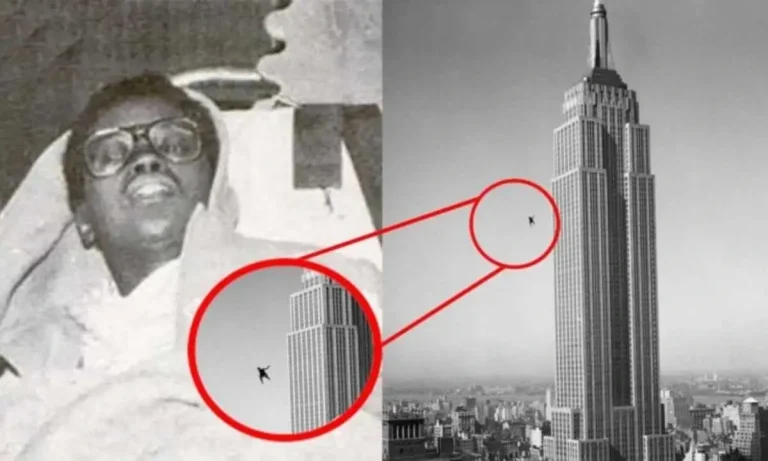Hundreds of Dead People In The US Are Frozen To Revive In The Future!
Death is supposedly a point of no return for many of us. However, it now seems that might not be the end after all! Cryonics is a process where human bodies are preserved at extremely low temperatures, hoping that future technology will revive them. One major organization actively working in this field is the Alcor Life Extension Foundation. The facility has packed cylindrical tanks loaded with liquid nitrogen that keep the heads and bodies of human “patients.”
Alcor freeze the bodies of people who were terminally ill with cancer, ALS, or any other disease with no present-day cure. But the process is something more than just simple freezing. The US facility now has preserved the bodies of over 250 people, including the famous baseball player Ted Williams. The facility located in Arizona has also preserved nearly 100 pets according to reports. One of its former employees has spoken up about the bizarre and unbelievable things he has seen in it. Let’s have a look.
Alcor Life Extension Foundation
The Alcor Life Extension Foundation, based in Scottsdale, Arizona, is dedicated to preserving human bodies in liquid nitrogen-filled tanks. They aim to revive the bodies when medical technology becomes advanced enough. When the time is right the bodies will be thawed. According to recent reports, there are over 250 bodies preserved and over 1500 around 1,500 people have signed up to have their bodies preserved.
Alcor has around 4 facilities across the world, three in the U.S. and one in Russia. The organization believes that freezing bodies at extremely low temperatures, can prevent decay and keep the bodies for future restoration to good health.
Alcor’s president emeritus, Max More, explains that the bodies are preserved using a process called vitrification, not just freezing. The process relies on cryoprotectants, chemicals that prevent ice formation during the freezing process. This turns the body into a glass-like state without forming damaging ice crystals.

One notable case is Matheryn Naovaratpong, the youngest patient at Alcor, who was only 3 years old when she passed with brain cancer. Her parents, both doctors, decided to preserve her in hopes that future technology could cure her illness.
“[She is] by far our youngest patient, not quite three years old… who had brain cancer. Both her parents were doctors and she had multiple brain surgeries and nothing worked, unfortunately.”
Max More, President Emeritus
Preserving a body at Alcor comes with a price tag of around $120,000. Despite this high cost, many people and pets have been preserved at the facility. Each body is stored in liquid nitrogen tanks at temperatures of minus 321 degrees Fahrenheit.

Procedure From Death to Preservation
Cryonics begins when a person is declared ‘legally’ dead. However, in cryonics, these patients are considered only legally dead, not biologically dead. The process starts with cooling the body in an ice bath. They then use a mechanical CPR device to maintain blood circulation and medicines to protect the cells against damage. This step is much like in organ donation procedures.
“We don’t want to freeze the patient. We want to vitrify them… The reason is that once you cool to very cold below freezing, the solution, instead of crystallizing, will just get thicker and thicker and it’s like a glassy block holding all the cells in place without any internal structure and so does no damage.”
Max More, President Emeritus

After vitrification, the bodies are stored at minus 321 degrees Fahrenheit (usually at −196 °C or −320.8 °F or 77.1 K) in a state where no biochemical or neurological activity occurs, meaning they remain unchanged for potentially hundreds of years.
“And once we reach that point, around minus 110 degrees, the body becomes truly solid and absolutely nothing is happening in the body. There’s no biochemical activity whatsoever, certainly no neurological activity. So at that point, it doesn’t matter whether you wait a day or 100 years, you’re going to be just the same as when you started”.
Max More, President Emeritus
However, the technology to revive a preserved body gives many challenges, such as repairing cellular damage and reversing the cause of death, remain unsolved.
Notable Involvements
Ted Williams’s son John Henry Williams, engineer and doctor L. Stephen Coles, economist and entrepreneur Phil Salin, and software engineer Hal Finney are some of the infamous individuals whose bodies are still in the facility.
Notable individuals who have opted for cryonics include PayPal founder Peter Thiel and Oxford transhumanist Nick Bostrom, each hoping that future advancements will make revival possible.
Case of Ted Williams | A Former Employer Speaks Up!
Ted Williams, the famous baseball player, is one of the most well-known individuals preserved by Alcor. However, his case surrounds controversy. Larry Johnson, a former chief operating officer at Alcor, claims in his book that Williams’ body was mishandled and even decapitated. Williams’s body is frozen to minus 321 degrees and has cost about $120,000, says Johnson.

Johnson also revealed that the company is responsible for the premature deaths of two clients. In one recorded conversation, Johnson is apparently asking the head, “So, what did he do? Did he just…”
Alcor’s Vice President Joe Hovey is then heard saying, “He killed her.”
However, Alcor has denied these allegations, stating that they are a pioneer in cryonics and that Johnson’s claims are false. Despite the controversies, the idea of preserving bodies for future revival continues to intrigue many.
Controversies and Ethical Debates Surrounding Cryonics
Cryonics is often viewed skeptically by the scientific community. Most scientists consider it as a pseudoscience. Dr. Arthur Caplan, a bioethicist, dismisses cryonics as “a college dormitory discussion.” He states that freezing oneself to make a comeback in the future is naive and akin to science fiction.
Ethical concerns also arise, including the financial burden on families and the potential exploitation of people’s hope for a future cure. The long-term viability of cryonics companies is another issue, as many early attempts at cryonic preservation failed due to financial instability.
Conclusion
Cryonics represents a fascinating intersection of science, hope, and controversy. While the idea of preserving bodies for future revival captures the imagination, it also raises significant scientific, ethical, and financial questions. The future of cryonics remains uncertain, but it continues to be a topic of interest and debate.
Also read,







